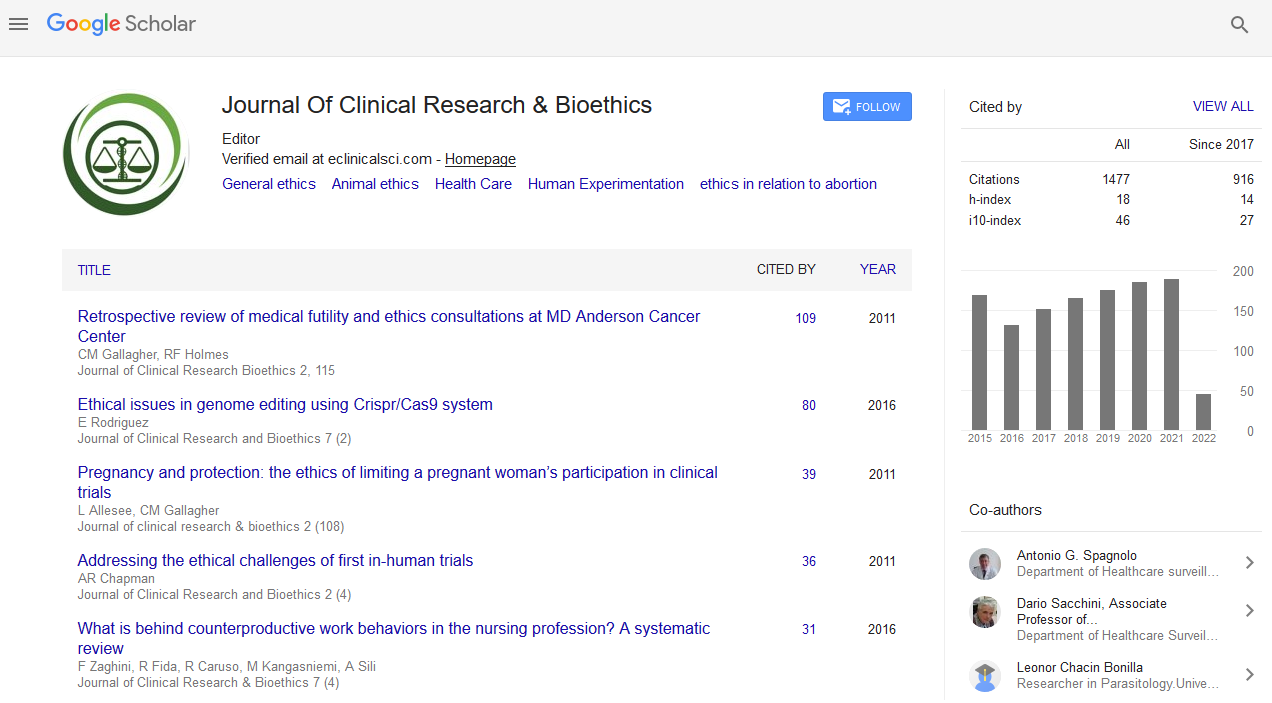PMC/PubMed Indexed Articles
Indexed In
- Open J Gate
- Genamics JournalSeek
- JournalTOCs
- RefSeek
- Hamdard University
- EBSCO A-Z
- OCLC- WorldCat
- Publons
- Geneva Foundation for Medical Education and Research
- Google Scholar
Useful Links
Share This Page
Journal Flyer

Open Access Journals
- Agri and Aquaculture
- Biochemistry
- Bioinformatics & Systems Biology
- Business & Management
- Chemistry
- Clinical Sciences
- Engineering
- Food & Nutrition
- General Science
- Genetics & Molecular Biology
- Immunology & Microbiology
- Medical Sciences
- Neuroscience & Psychology
- Nursing & Health Care
- Pharmaceutical Sciences
Abstract
Fading Away the Borders Between Religion and Science: The Proposal from the Spiritist Medical Model
Marcelo Saad, Roberta de Medeiros and Amanda Cristina Fávero Mosini
There is a common notion that science and religion are in conflict and have little in common. However, authorities from both sides timidly rehearse an approach intention. Some phenomena that seem to counteract the common sense of reality are genuine calls for collaboration between science and religion. Spiritism (not synonym of spiritualism) was conceived as science, philosophy, and religion, all together. The form into which Spiritism has evolved in Brazil is very peculiar, taking contours of a religious denomination. Specific therapeutic approaches were developed to prevent and to restore a balanced spiritual-energetic state. Thus, most adepts search spiritist centres due to physical and mental health problems. The interest on the interface between medicine and the Spiritist Doctrine led to the creation of the Spiritist Medical Association. The Spiritist Medical Model aims at a change to a more humanized medicine, with a pretension of presenting to the world a renewed vision of the human being. Thus, it also brought the philosophical dictates from Spiritism to value implications of healthcare practices. Spiritism has many arguments with potential do fill some gaps about the human nature, which can contribute to understanding many unexplained or misinterpreted phenomena. Medical debates may be enriched with its principles, with potential to contribute for a paradigm shift on medicine and science. Currently, scholar researchers linked to this ideal are trying to sew all these fields in a continuous fabric. Who knows if, in the next 50 years, this constant dialog among science, philosophy, religion, medicine and bioethics will fade off the borders of these disciplines? At this point, the human knowledge will be facing a real paradigm shift.


